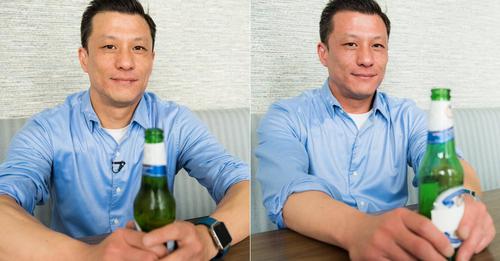Pepcid, known by the generic name Famotidine, is an over-the-counter medication. It's designed to reduce the amount of acid your stomach produces. Thus, it's traditionally used to treat conditions such as heartburn, acid reflux disease, and gastric ulcers. Nowadays, however, Pepcid is also used to prevent Asian flush reaction.
Asian flush reaction is a condition in which an individual develops a "flush”, or turns tomato red, in the face, neck, and shoulders after consuming alcoholic beverages.
The question is: is it safe to use Pepcid for this purpose? Read on to find out!
Can Pepcid Stop Asian Flush Reaction?
In order to really understand the connection between Famotidine and alcohol, you need to understand what causes "Asian flush” in the first place. Also, you need to know more about the effects Pepcid has on the body. Only then can you know whether it is safe to use Pepcid for this purpose.
1. The genetics behind Asian flush reaction
Asian flush reaction can be attributed, in a simplified manner, to two genetic deficiencies that affect the individual's ability to metabolize alcohol. Keep in mind that once alcohol is ingested, it's processed by the liver and broken down by a special enzyme called alcohol dehydrogenase. This process results in many byproducts, including one called acetaldehyde.
Asians, however, have different genetic coding for that enzyme. This variation in their DNA makes them process alcohol much faster than normal. Asian people usually accumulate acetaldehyde within their bodies after consuming alcoholic beverages.
But that's not the end of the story. Almost half of East Asians have a genetic variation for another enzyme. This time, the enzyme affected is responsible for breaking down acetaldehyde. Asians not only experience a higher concentration of acetaldehyde, but the acetaldehyde remains in their system for much longer than normal. This byproduct causes blood vessels to dilate, producing the characteristic red face and neck.

2. How does Pepcid work?
Now, let's take a look at Pepcid. This medication is a type of antihistamine known as an H2 blocker. Normally, histamine stimulates the H2 receptors within the stomach, leading to the production of stomach acid. By blocking these receptors, the production of gastric acid is reduced.
How do Pepcid and alcohol go hand in hand? It's simple. Pepcid slows down the breakdown of alcohol. It works by lowering the amount of stomach acid available for digestion. Some studies have suggested that H2 blockers inhibit the activity of the enzyme alcohol dehydrogenase. Pepcid reduces the accumulation of acetaldehyde in the bloodstream and wards off the onset of hangover symptoms.
Is it Safe to Use Pepcid to Prevent Asian Glow?
Although Pepcid reduces the embarrassing symptoms of Asian flush reaction, it doesn't change one medical rule of thumb. It's never safe to use drugs, whether they are prescribed or over-the-counter, to treat conditions that they aren't originally designed for.
As stated above, Pepcid is intended for the treatment of conditions caused by excessive stomach acid. These conditions include acid reflux disease, gastric ulcers, intestinal ulcers, and acid indigestion. The symptoms that this medicine targets include heartburn, difficulty swallowing, stomach pain, and persistent cough associated with acid reflux.
Consequences of using Pepcid for Asian flush reaction
Trying to force a connection between Pepcid and alcohol can lead to some dangerous consequences. For example, the use of Pepcid with the intention of slowing down the breakdown of alcohol can lead the individual to ingest increasing amounts of alcohol.
It also produces tolerance over time. Later on, you may need higher doses to produce the same effect. This could lead to an overdose. Overdosing on Pepcid means the individual could experience trouble breathing or pass out. If this occurs, don't hesitate to call 911 or your local poison control center.
Keep in mind that Pepcid can interact with other types of medication. Certain HIV medications and antifungals need stomach acid to be absorbed properly. Thus, Pepcid can lower their effectiveness. You can't mix them boldly just in the aim of avoiding flush after drinking. Taking medications? You'd better stay away from alcohol! Besides interaction, Pepcid alone can bring you some adverse effects.
Common side effects of Pepcid
As with any medication, the use of Pepcid causes many side effects ranging from mild to severe:
- Headaches
- Constipation
- Diarrhea
- Allergic reaction
- Easy bruising or bleeding
- Irregular heartbeat
- Infections
- Mood changes
- Seizures
If you experience any of these serious side effects or the mild effects persist or worsen, tell your doctor immediately.
Safer Ways to Prevent Asian Flush Reaction
As you can see, the mix of Pepcid and alcohol shouldn't be taken lightly. While taking antihistamines before consuming alcohol will reduce the unsightly effects of "Asian glow”, the risks greatly outweigh the benefits.
Unfortunately, there's no cure for Asian flush reaction. The safest choice is to reduce your intake of alcohol. Some Asian people have opted to avoid drinking alcohol altogether. Not only does this prevent "Asian glow”, but it also protects you from the dangerous effects of alcohol consumption.
If you choose to continue consuming alcohol, prepare yourself properly. Never drink on an empty stomach. Not only does this boost the harmful effects of alcohol, but it will also intensify your hangover. Also, remember to stay hydrated before and after alcohol consumption.